- You cannot add "Abaktal 400 mg / 5 ml 10s solution for injection in ampoules" to the cart because the product is out of stock.
Augmentin 400mg / 57mg / 5ml 70ml powder for oral suspension
$20.20
Description
The instruction for medical use of Augmentin® medicine the Trade name of Augmentin® the International unlicensed name Is not present the Dosage form Powder for preparation of suspension for intake, 400 mg / 57 mg / 5 ml, 35 ml and 70 ml Structure of 5 ml of suspension contain active agents: amoxicillin (in the form of trihydrate amoxicillin) 400 mg, clavulanic acid (in the form of clavulanate potassium) 57 mg, excipients: xanthane gum, aspartame, silicon dioxide colloidal anhydrous, succinic acid, gipromeloza, light treacle fragrance dry, fragrance crimson dry, fragrance orange dry 1, fragrance orange dry 2. The description Powder of white or almost white color with yellowish particles, with a characteristic smell. The prepared suspension of white or almost white color, when standing is slowly formed a deposit of white or almost white color. Pharmacotherapeutic group Antibacterial drugs for system use. Beta laktamnye antibacterial drugs – penicillin. Penicillin in a combination with inhibitors beta laktamaz. Clavulanic acid + amoxicillin. The ATX J01CR02 code the Pharmacological Pharmacokinetics Absorption Amoxicillin properties and clavulanate are well dissolved in aqueous solutions with physiological value rn, quickly and completely soaked up from digestive tract after oral administration. Absorption of amoxicillin and clavulanic acid is optimum in case of administration of drug at the beginning of food. After administration of drug in its bioavailability makes 70%. Profiles of both components of drug are similar and reach peak concentration in plasma (Tmax) approximately in 1 hour. Concentration of amoxicillin and clavulanic acid in blood serum is identical as in case of combined use of amoxicillin and clavulanic acid, and each component separately. Distribution Therapeutic concentration of amoxicillin and clavulanic acid are reached in different bodies and fabrics, interstitial liquid (lungs, abdominal organs, the gall bladder, fat, bone and muscular fabrics, pleural, synovial and peritoneal liquids, skin, bile purulent separated to a phlegm). Amoxicillin and clavulanic acid practically do not get into cerebrospinal fluid. Linking of amoxicillin and clavulanic acid with proteins of plasma moderate: 25% for clavulanic acid and 18% for amoxicillin. Amoxicillin, as well as the majority of penicillin, is emitted with breast milk. In breast milk trace amounts of clavulanic acid are also found. Except for risk of a sensitization, amoxicillin and clavulanic acid has no negative impact on health of the babies raised by breast milk. Amoxicillin and clavulanic acid get through a placental barrier. Metabolism Amoxicillin is partially allocated with urine in the form of inactive penicillic acid in the quantity equivalent to 10-25% of the accepted dose. Clavulanic acid in an organism is exposed to intensive metabolism to 2.5-digidro-4-(2 hydroxyethyl) – 5-oxo-1H-pyrrol-3-carboxylic acid and 1 – amino – 4 – hydroxy – butane – 2 – it also is allocated with urine and a stake and also in the form of carbon dioxide through expired air. Elimination Amoxicillin is removed, mainly, by kidneys whereas clavulanic acid – by means of both renal, and extrarenal mechanisms. After single dose in one tablet of 250 mg / 125 mg or 500 mg / 125 the mg about 60-70% of amoxicillin and 40-65% of clavulanic acid during the first 6 h is removed with urine in not changed look. The pharmacodynamics of Augmentin® is the combined antibiotic containing amoxicillin and clavulanic acid with a wide range of bactericidal action, resistant to a beta laktamaze. Amoxicillin is semi-synthetic (beta laktamny) the antibiotic of a broad spectrum of activity active concerning many gram-positive and gram-negative microorganisms. Amoxicillin collapses under the influence of a beta laktamaz and does not affect microorganisms which produce this enzyme. The mechanism of effect of amoxicillin consists in inhibition of biosynthesis of peptidoglikan of a cell wall of a bacterium that usually leads to lysis and death of a cell. Clavulanic acid is beta laktamat, on chemical structure close to penicillin which has ability to inactivate enzymes beta laktamaz the microorganisms showing to rezistentnosit to penicillin and cephalosporins, thereby preventing an amoxicillin inactivation. Beta laktamazy are produced by many gram-positive and gram-negative bacteria. Action beta laktamaz can lead to destruction of some antibacterial drugs even prior to their impact on pathogens. Clavulanic acid blocks effect of enzymes, restoring sensitivity of bacteria to amoxicillin. In particular, it has high activity concerning plasmid beta laktamaz with which the medicinal resistance is often connected, but is less effective concerning chromosomal beta laktamaz 1 type. Presence of clavulanic acid at structure of Augmentina® protects amoxicillin from the destroying action beta laktamaz and expands its range of antibacterial activity with inclusion in it of the microorganisms usually resistant to other penicillin and cephalosporins. Clavulanic acid in the form of monodrug does not render clinically significant antibacterial effect. The mechanism of development of resistance Exists 2 mechanisms of development of resistance to Augmentinu® – an inactivation bacterial beta lactamelements which are insensitive to clavulanic acid influence, including the classes B, C, D – deformation penicillin – the connecting protein that the Impermeability of a bacterial wall leads to reduction of affinity of an antibiotic in relation to a microorganism and also mechanisms of a pomp can cause or contribute to the development of resistance, especially at gram-negative microorganisms. The sensitivity to Augmentinu® can vary from the geographic location and time. Before prescribing of drug it is whenever possible necessary to estimate sensitivity of strains according to local data and to define sensitivity by a fence and the analysis of samples at the specific patient, especially in case of heavy infections. Highly sensitive activators Gram-positive aerobes of Enterococcus faecalis Gardnerella vaginalis Staphylococcus aureus (sensitive to Methicillinum) Coagualase-negative staphylococcus (sensitive to Methicillinum) Streptococcus agalactiae Streptococcus pneumoniae1 Streptococcus pyogenes and other beta and hemolytic streptococci Streptococcus viridans group Gram-negative aerobes of Capnocytophaga spp. Eikenella corrodens Haemophilus influenza Moraxella catarrhalis Neisseria gonorrhoeae Pasteurella multocida Anaerobic microorganisms of Bacteroides fragilis Fusobacterium nucleatum Prevotella spp. Microorganisms with the possible acquired resistance Gram-positive aerobes of Enterococcus faecium * Gram-negative aerobes of Escherichia coli Klebsiella oxytoca Klebsiella pneumonia Proteus mirabilis Proteus vulgaris Microorganisms with natural resistance: Gram-negative aerobes of Acinetobacter species Citrobacter freundii Enterobacter species Legionella pneumophila Morganella morganii Providencia species Pseudomonas species Serratia species Stenotrophomonas maltophilia Other: Chlamydia trachomatis Chlamydophila pneumoniae Chlamydophila psittaci Coxiella burnetti Mycoplasma pneumoniae. 1 Except for strains of Streptococcus pneumoniae resistant to penicillin * Natural sensitivity in the absence of the acquired resistance Indications Augmentin is shown for treatment of the following infections at adults and children: – acute bacterial sinusitis (at the confirmed diagnosis) – acute average otitis – exacerbation of chronic bronchitis (at the confirmed diagnosis) – community-acquired pneumonia – cystitis – pyelonephritis – the infection of skin and soft tissues (in particular, inflammation of hypodermic cellulose – cellulitis, stings of animals, acute abscesses and phlegmons of maxillofacial area) – infections of bones and joints (in particular, osteomyelitis) Should take official recommendations about the corresponding use of antibacterial agents into account. The route of administration and doses Augmentin is intended for intake. Doses are specified concerning the content of amoxicillin/clavulanic acid, except for cases when doses are specified concerning a separate component. When choosing a dose of Augmentin for treatment of a separate infection it is necessary to consider the following: · Expected are pathogenic also their possible susceptibility to effect of antibacterial drugs · Weight and place of defeat by an infection · Age, body weight and function of kidneys of the patient, as shown below it is necessary to consider Use of alternative forms of release of Augmentin (e.g., such which provide higher doses of amoxicillin and/or various ratios of amoxicillin and clavulanic acid) as required (you watch the sections Special Instructions and Pharmacodynamics). For children with the body weight & lt, 40 kg the real drug of Augmentin provides the maximum daily dose in 1000-2800 mg of amoxicillin / 143-400 to clavulanic acid mg, at reception with observance of the recommendations provided below. In need of purpose of higher daily dose of amoxicillin it is recommended to choose other dosage of Augmentin to avoid reception of high doses of clavulanic acid needlessly (you watch the sections Special Instructions and Pharmacodynamics). Duration of treatment has to be determined by the patient’s response. For some infections (e.g., osteomyelitis) longer periods of treatment are required. Treatment should not last more than 14 days without survey passing (you watch the section Special Instructions concerning treatment extension). The recommended doses to Adults and children it is powerful ≥ 40 kg appoint Augmentin® with use of a form of release for adults (tablet). Children the weight & lt, 40 kg – from 25 mg / 3.6 mg/kg/day up to 45 mg / 6.4 the mg/kg/day divided into 2 receptions, in slight and moderate infections – up to 70 mg / 10mg/kg/put, divided into 2 receptions, for treatment of more serious infections (average otitis, sinusitis, lower respiratory tract infections). The dose, depending on age and weight, is specified in body weight mg/kg a day or in milliliters of ready suspension. The body weight (kg) of 25 mg / 3.6 mg/kg/days of 45 mg / 6.4 kg/days 70 mg / 10 mg/kg/days of 5 0,8 ml 2 times in day of 1.4 ml 2 times a day – 6 0,9 ml 2 times in day of 1.7 ml 2 times a day – 7 1,1 ml 2 times in day of 2.0 ml 2 times a day – 8 1,3 ml 2 times in day of 2.3 ml 2 times a day – 9 1,4 ml 2 times in day of 2.5 ml 2 times a day – 10 1,6 ml 2 times in day of 2.8 ml 2 times a day – 11 1,7 ml 2 times in day of 3.1 ml 2 times a day – 12 1,9 ml 2 times in day of 3.4 ml 2 times a day – 13 2,0 ml 2 times in day of 3.7 ml 2 times in day of 5.7 ml 2 times in day of 14 2,2 ml 2 times in day of 3.9 ml 2 times in day of 6.0 ml 2 times in day of 15 2,3 ml 2 times in day of 4.2 ml 2 times in day of 6.5 ml 2 times in day of 20 3,1 ml 2 times in day of 5.6 ml 2 times in day of 8.8 ml 2 times in day of 25 4,0 ml 2 times in day of 7.0 ml 2 times in day of 11 ml 2 times in day of 30 4,7 ml 2 times in day of 8.5 ml 2 times in day of 13 ml 2 times in day of 35 5,5 ml 2 times in day of 9.8 ml 2 times in day of 15.3 ml 2 times in day of 40 6,3 ml 2 times in day of 11.3 ml 2 times in day of 17.5 ml 2 times a day Are absent clinical these uses of this dosage of Augmentina® over 45 mg / 6.4 mg/kg/days at children 2 years are younger. There are no clinical these uses of Аугментина® 400 mg / 57 mg / 5 ml at children 2 months in this connection, recommendations to dosing at this cohort of patients are absent are younger. For decrease in potential risk of influence on digestive tract, Augmentin® is recommended to be accepted together with food, at the beginning of food for its maximum absorption. Time of the carried-out therapy depends on the response of the patient to the carried-out treatment. Some pathologies (in particular, osteomyelitis) can demand longer course. It is not necessary to continue treatment more than 14 days without repeated assessment of a condition of the patient. If necessary performing step therapy is possible (intravenous administration of drug with the subsequent transition to oral administration in the beginning). Patients with a renal failure the regulation of a dose for patients with clearance of creatinine (CrCl) higher than 30 ml/min. is not required. At patients with clearance of creatinine less than 30 ml/min. are not recommended to use the dosage form of Augmentina® having an amoxicillin ratio to clavulanic acid 7:1 as there are no recommendations about regulation of a dose. Patients with abnormal liver functions carry out Treatment with care, regularly carry out monitoring of function of a liver. The suspension route of administration Suspension gets divorced just before the first use. Check integrity of a cover before use. Stir up a bottle with powder. Powder should be dissolved in 32 ml or 64 ml (according to) the boiled water cooled to room temperature gradually stirring up and adding water to a tag on a bottle. The ready volume of suspension is equal 35 ml or 70 ml respectively. The bottle should be turned and to stir up carefully before full dissolution. The prepared suspension – white or almost white color, when standing is slowly formed a deposit of white or almost white color. The bottle should be shaken up before each use. For drug dosing it is necessary to use a measured cap cover which needs to be rinsed well with water after each use. For more exact dosing of small volumes of suspension, especially at children is younger than 3 months, use of the standard disposable medical syringe is necessary. At treatment of children under 2 years, ready Augmentina® suspension can be dissolved with water half. Side effects Very often ≥ 1 of 10, is frequent ≥ 1 of 100 and & lt, 1 of 10, sometimes ≥ 1 of 1000 and & lt, 1 of 100, is rare ≥ 1 of 10000 and & lt, 1 of 1.000, also lt is very rare, 1 of 10000 is frequent – candidiasis of skin and mucous covers – nausea, vomiting, diarrhea Nausea meets at use of high doses of drug more often. For decrease in extent of manifestation it is recommended to accept suspension at the beginning of meal. Infrequently – dizziness, a headache – dyspepsia – moderate increase in level of liver enzymes of ALT/nuclear heating plant – skin rash, an itching, a small tortoiseshell Seldom – a reversible leukopenia (including a neutropenia), thrombocytopenia – a multiformny erythema Very seldom – the antibiotiko-associated colitis (including pseudomembranous and hemorrhagic) – black hairy language (chronic hyperplasia of threadlike nipples of language) – reversible superficial coloring of adamantine substance of tooth (easily is removed when cleaning by a brush). Respect for hygiene of an oral cavity helps to prevent coloring of adamantine substance of tooth. It is unknown – aseptic meningitis – rapid growth of insensitive organisms – a reversible agranulocytosis and hemolytic anemia – increase in a bleeding time and the index of a prothrombin time – a Quincke’s disease, an anaphylaxis, the syndrome similar to a serum disease, an allergic vasculitis – reversible superactivity and spasms – hepatitis, cholestatic jaundice – Stephens-Johnson’s syndrome – a toxic epidermal necrolysis – bullous exfoliative dermatitis, sharp generalized exanthematous pustulyoz. At development of these symptoms, drug has to be cancelled. – interstitial nephrite, crystalluria. Contraindications – hypersensitivity to penicillin or to any component of drug – the known hypersensitivity to others beta laktamnym to antibiotics (cephalosporins, karbapenema, monobaktama) – the jaundice or an abnormal liver function which developed against the background of reception of a combination of amoxicillin/clavulanic acid – phenylketonuria (in connection with presence of aspartame as a part of drug) Medicinal interactions Were revealed cases of increase in a prothrombin time at the patients receiving anticoagulants (atsenokumarol and warfarin) together with intake of amoxicillin. At simultaneous use of Augmentina® and anticoagulants it is necessary to carry out the corresponding monitoring with correcting of a dose of Augmentina® if necessary. Penicillin can reduce removal of a methotrexate that is potential risk of increase in its toxicity. It is not recommended to apply Augmentin® along with probenits
of ohms. Probenitsid reduces canalicular secretion of amoxicillin and therefore simultaneous use of Augmentina® and a probenitsid can lead to increase in amoxicillin level blood. Аугментин® influences indestinal flora and leads to reduction of the return absorption, decrease in efficiency of the combined oral contraceptives. At the patients accepting mikofenolat mofetit, at combined use with Augmentinom® the concentration of an active metabolite of mikofenolovy acid when assigning an initial dose decreases approximately by 50%. Change of level of concentration of an initial dose can not correspond to changes of concentration of total exposure of mikofenolovy acid. Simultaneous use of Allopyrinolum and Augmentina® can increase risk of emergence of allergic reactions. Data on simultaneous use of Allopyrinolum and Augmentina® are absent now. Special instructions to Adults and children are more senior than 12 years or with body weight more than 40 kg are recommended use of Augmentina® in tablets. Before an initiation of treatment of Augmentinom® it is necessary to collect the detailed anamnesis concerning the previous reactions of hypersensitivity to penicillin, cephalosporins or others beta laktamnye antibiotics. Also fatal reactions of hypersensitivity (acute anaphylaxis) on penicillin which came to light at patients with the previous hypersensitivity on penicillin more often are described serious, and sometimes. In case of allergic reaction it is necessary to stop treatment of Augmentinom® and to begin alternative therapy. At development of serious reactions of hypersensitivity the patient should enter adrenaline immediately. Oxygenotherapy, the intravenous administration of steroids and ensuring passability of airways including an intubation can be required. In case of confirmation of the disease caused amoxicillin – sensitive strains, it is necessary to refuse a combination amoxicillin/clavulanic acid and to appoint amoxicillin separately. It is not recommended to apply Augmentin® at high risk of possible resistance to a beta lactamnoma to a drug component. Аугментин® it should not be applied to treatment of the pathologies caused by Streptococcus pneumoniae, having resistance to penicillin. Аугментин® it is not necessary to appoint at suspicion of an infectious mononucleosis as with this disease amoxicillin can cause skin rash in patients that complicates diagnosis of a disease. When prescribing drug to patients with reduced function of kidneys or when using high doses the development of spasms is possible. Combined use of Allopyrinolum and amoxicillin increases a likelihood of development of skin allergic reactions. Long-term treatment of Augmentinom® can be followed by the overgrowth of microorganisms, insensitive to it. For prevention of discoloration of adamantine substance of tooth it is necessary to brush teeth after each intake of suspension. Cases of development of pseudomembranous colitis against the background of use of antibiotics which weight varied from easy to heavy degree were revealed. Thus, it must be kept in mind possibility of this pathology at patients with diarrhea at reception of antibiotics or after the termination of a course of therapy. In case of development of long or considerable diarrhea, in the presence of spasms in a stomach, treatment of Augmentinom® has to be immediately stopped and patients have to be directed to further inspection. In general, Augmentin® is transferred well and has hypotoxicity inherent to all penicillin. At long treatment of Augmentinom® it is recommended to estimate periodically functions of kidneys, a liver, bodies of a hemopoiesis. At the patients receiving Augmentin® the increase in a prothrombin time therefore at simultaneous use of Augmentina® and anticoagulants it is necessary to carry out the corresponding monitoring is occasionally observed. With care it is necessary to apply Augmentin® at patients with an abnormal liver function. Signs and symptoms of damage of a liver usually arise in time or right after an initiation of treatment, but in certain cases can not be shown within several weeks after the therapy termination. As a rule, they are reversible. Hepatic violations can be very serious, and in extremely exceptional cases was reported about death. Almost always they were registered at patients with a serious basic disease or at those who at the same time took the drugs known as potentially influencing a liver. Cases of development of the antibiotiko-associated colitis against the background of reception of Augmentina® which extent was from insignificant to life-threatening were reported. In this regard it is necessary to consider the possibility of development of colitis in patients with the diarrhea which developed in time or after reception of antibiotics. At confirmation of the diagnosis of colitis, Augmentin® has to be immediately cancelled, the patient has to consult with the doctor for performing necessary therapy. At patients with a renal failure the dose of drug has to be adjusted according to disease severity. Patients with a reduced diuresis in rare instances can have a crystalluria. During introduction of high doses of amoxicillin it is recommended to accept enough liquid and to support an adequate diuresis for reduction of probability of formation of crystals of amoxicillin. At patients with a catheter constant assessment of their state is necessary. Presence of clavulanic acid at Augmentine® can be the cause of nonspecific binding of IgG and albumine with a membrane of erythrocytes that leads to false positive reaction of Koombs. The patients receiving amoxicillin/clavulanic acid in whom did not find Aspergillus infection subsequently had messages about false positive test results of Bio-Rad Laboratories Platelia Aspergillus EIA. It was reported about cross-reactions with a не-Aspergillus polysaccharides and polyfuranoses in the Bio-Rad Laboratories Platelia Aspergillus EIA test. Therefore, positive takes of analyses at the patients receiving amoxicillin/clavulanic acid should be interpreted carefully and to confirm with other diagnostic methods. During treatment by amoxicillin for determination of content of glucose in urine it is necessary to use methods of fermental oxidation of glucose, so not fermental methods can lead to obtaining false positive results. Аугментин®, powder for preparation of suspension for intake of 400 mg / 57 mg / 5 the ml, contains 2.5 mg/ml of aspartame (E951), a phenylalanine source. Drug is not used at patients with phenylketonuria. Pregnancy and the period of a lactation Suspension for intake is intended for use in pediatrics. Limited data on use of amoxicillin/clavulanic acid during pregnancy at people do not indicate the increased risk of congenital malformations. In the only research of women with premature births and a premature rupture of an embryonic membrane it was reported that preventive treatment by amoxicillin / clavulanic acid can be connected with the increased risk of a necrotizing coloenteritis at newborns. Both amoxicillin, and clavulanic acid are emitted in breast milk (influence of clavulanic acid on the nursed child is unknown). Therefore, development of diarrhea and fungal infection of mucous membranes in the nursed child in this connection, feeding, perhaps, should be stopped is not excluded. Amoxicillin/clavulanic acid have to be applied during feeding by a breast only after assessment of benefit / risk by the attending physician. There Is no feature of influence of medicine on ability to run the vehicle or potentially dangerous mechanisms data, however, in connection with a possibility of development of side reactions (allergy, dizziness, spasms) it is necessary to be careful. Overdose Symptoms: gastrointestinal disorders and disturbances of water and electrolytic balance are possible. The amoksitsillinovy crystalluria in certain cases leading to development of a renal failure is described. When prescribing drug to patients with reduced function of kidneys or when using high doses the development of spasms is possible. Sedimentation of amoxicillin on vesical catheters, especially after purpose of high doses by intravenous administration is possible. Treatment: performing symptomatic therapy, correction of water and electrolytic balance. Аугментин® it is brought out of blood by means of a hemodialysis. A form of release and packing Powder for preparation of suspension for intake 400mg/57mg/5ml, 35 ml or 70 ml. Powder for preparation of suspension is placed in bottles from transparent III glass with the screwing-up aluminum cover with internal varnish coating with protection against the first opening and the polymeric laying from PVC or polyolefin supplied with a cap doser. It can be delivered with a plastic measured spoon or the dosing syringe. On 1 bottle together with the instruction for medical use in the state and Russian languages place in a pack from cardboard. To Store storage conditions in the dry place at a temperature not above 25 °C. To store the prepared suspension in the fridge at a temperature from 2 °C to 8 °C and to use within 7 days. Not to freeze! To store out of children’s reach! A period of storage 2 years not to accept after an expiration date Prescription status According to the prescription of Proizvoditel SmitKlyayn Bichem Limited, Great Britain (Clarendon Road, Worthing, West Sussex, BN 14 8QH, United Kingdom) the Owner of the registration certificate of SmitKlyayn Bichem Limited, Great Britain (980 Great West Road, Brentford, Middlesex, TW89GS, United Kingdom) Augmentin is the registered trade mark of the group of companies GlaksoSmitKlyayn Address of the Organization accepting in the territory of the Republic of Kazakhstan a claim (offer) from consumers on quality of medicine and responsible for post-registration observation of safety of medicine of Predstavitelstvo kompanii GlaksoSmitKlyayn Export Ltd in Kazakhstan 050059, Almaty, Furmanov St., 273 Phone number: +7 727 258 28 92, +7 727 259 09 96 Fax number: + 7 727 258 28 90 E-mail address:
To Develop kaz.med@gsk.com





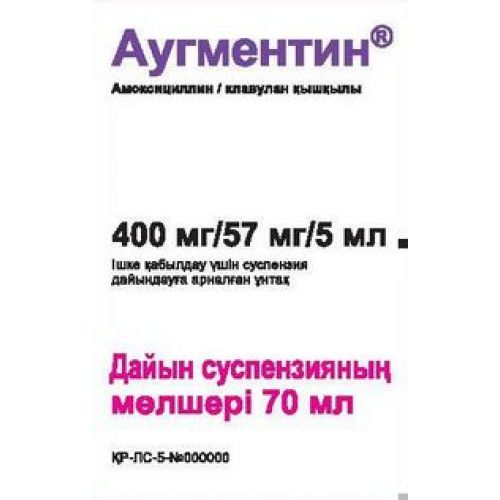
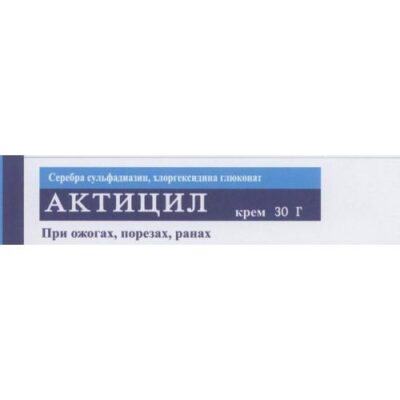
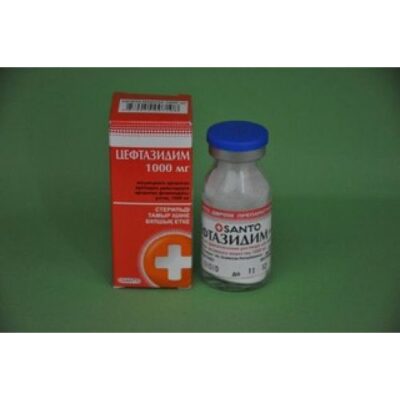
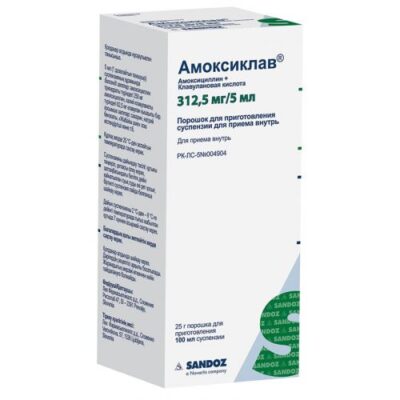
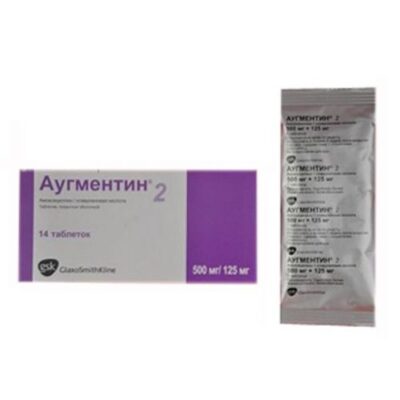
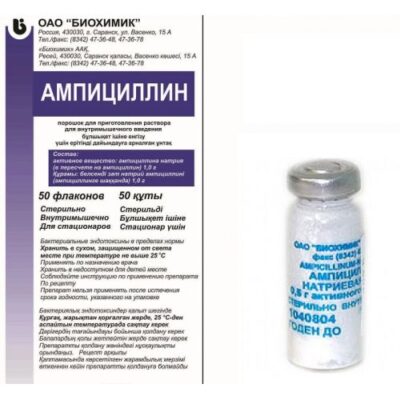
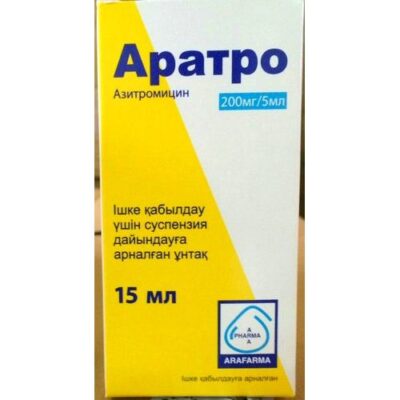
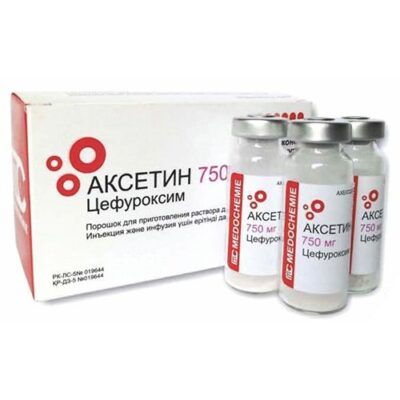
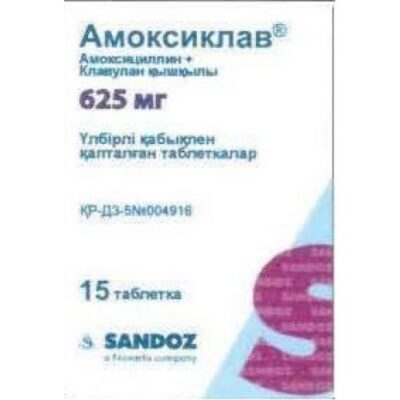
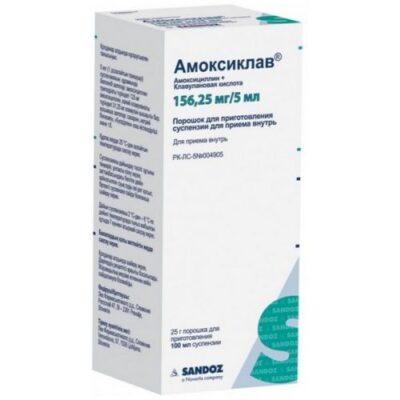
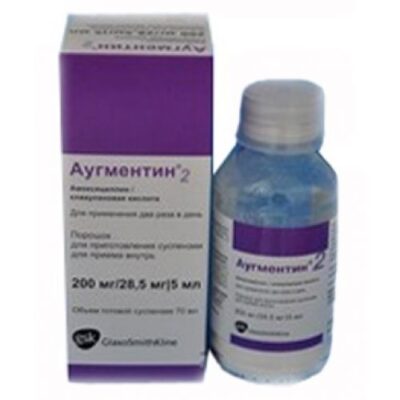






Reviews
There are no reviews yet.